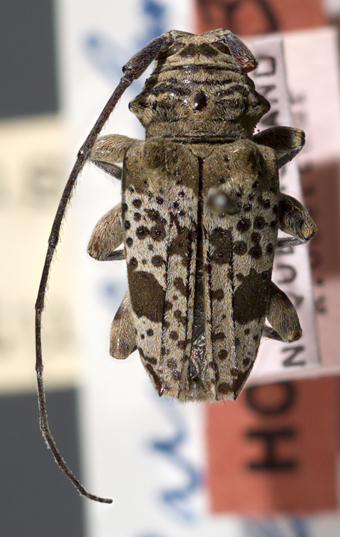|
Pogonocherini Classification
Selected References to Larvae Specimens |
 Cosmotomidius vincus Machado & Monné, 2009; dorsal Cerambycidae:Lamiinae:Pogonocherini Photograph © A.M. Hodson  Exocentrus lachrymosus Pascoe, 1864; dorsal holotype specimen Cerambycidae:Lamiinae:Pogonocherini Photograph © E.H. Nearns  Parahybolasius fuscomaculatus Breuning, 1982; dorsal holotype specimen Cerambycidae:Lamiinae:Pogonocherini Photograph © E.H. Nearns |

